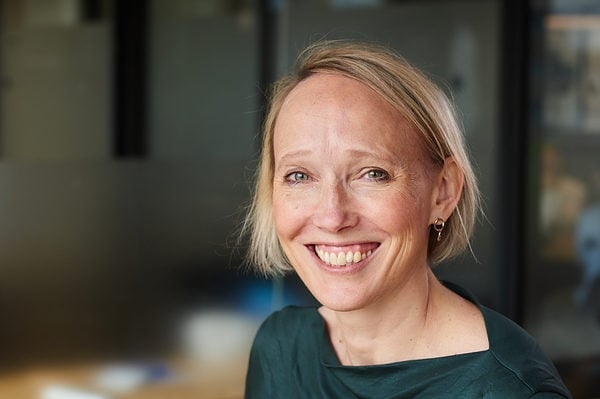As part of our #GivingTuesday campaign, we spoke to Kate Marsden, Citizen’s chief marketing officer (CMO), about how they use Open Banking technology to help reduce transaction costs and maximise each donation for charities.
1. Can you tell us more about your work, and in particular your work with charities?

Kate Marsden, CMO at Citizen
I run the marketing team at Citizen, and one of the most interesting aspects is the diversity of sectors we work with. In iGaming and e-commerce there are unsurprisingly large money flows from high spenders, but some of our earliest customers came from sectors serving student and low-income markets where ease of use for the consumer – and cost-effectiveness for the business – is critical.
These benefits are obviously crucial to the charity sector too, where organisations need to deliver as much return as possible from the funds they’re raising. It’s a pleasure to have been working with a company such as Wonderful.org, which is committed to ensuring 100% of the funds donated get passed on to its member charities.
2. What are the challenges the charitable sector is facing in terms of fundraising?
We’re clearly entering that perfect storm where the need for charitable donations is going to be rising, but with cost-of-living increases, donors’ ability to give is going to be squeezed. According to the membership community for charities NCVO, donations from the public make up about half of the charity sector’s income in the UK, and it’s inevitable that this will tighten. On a more practical basis, charities’ operational costs will inflate, and with the shift to cashless payments accelerated by the pandemic, traditional ways of fundraising – such as collecting cash on the high street with a shake of a bucket – will have to continue to transform. Embracing digital payment methods is one element of this transformation.
3. Why Open Banking? And how can it help unlock new revenue streams for the charitable sector?
Open Banking payments are fast and cost-effective. We’ve seen that some charity platforms can charge member charities up to 8% in fees on donations and/or monthly subscription fees – while donors can also get charged up to 15% in tips when they transact. Each platform will obviously have its own business model, but – at least where the high cost of card payments is used as justification – we don’t believe it has to be like this.
With Open Banking that transaction cost number drops to less than 1% of the payment processed, and it’s achieved by cutting out the intermediaries involved in a typical credit or debit card payment. Additionally, the removal of cards from the equation also removes card-based fraud – which in turn further reduces processing costs – and means more money makes its way to the causes that matter.
Finally, because anyone set up with online banking can use it, in countries such as the UK with high digital penetration, a charity that offers Open Banking payments as an option is immediately accessible to a very broad user base. If you have problems getting a mobile signal and are being frustrated by strong customer authentication texts on your card payments, it’s a far, far easier process – as it is if you struggle to enter digits manually, as all payment data is pre-filled and just requires a couple of clicks on your phone to make a secure transaction.
4. What is stopping charities from exploring an Open Banking payments option?
Nothing! For example, Citizen’s payment solution comes in a modular form so if you want to use Open Banking just for incoming donations (pay-ins), or for outbound funds allocation (payouts), you can just plug in the module you want to your existing systems. Implementation typically takes less than a day.
5. How easy is it to introduce an Open Banking payment option for a charity?
When you’re adding a new payment option to your donation process then you need to balance the benefits of offering a wide range of solutions versus the risk of offering too many, producing ‘payment fatigue’. Charities need their donation process to be smooth and simple. The ideal payment process is so trusted and intuitive you should barely notice you’ve done it.
6. What do consumers stand to gain by using Open Banking payments to donate?
From a consumer’s perspective, Open Banking payments are super easy to use, and have the benefit of transferring funds almost instantaneously. So, as a consumer, you always know where you stand financially – and you’ve the reassurance of knowing your chosen charity can start using your donation immediately. And because you’ve done away with cards, card numbers and the ensuing risk of fraud – relying instead on your banks’ biometrics authentication processes – you can make your donations worry-free.










